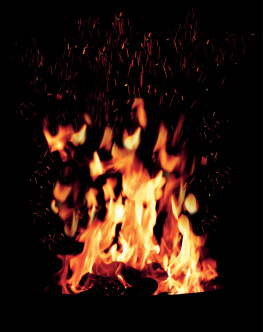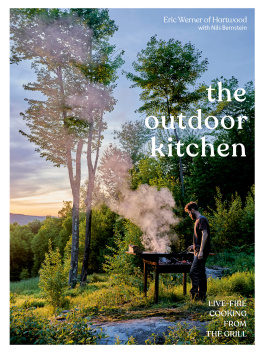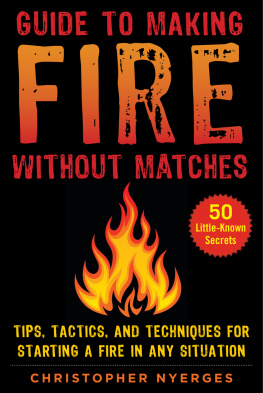
Copyright 2018 by
Annette McGivney
Illustrations by Austin Frick
All rights reserved
For information about permission to reproduce selections from this book, write to Permissions, The Countryman Press, 500 Fifth Avenue, New York, NY 10110
For information about special discounts for bulk purchases, please contact W. W. Norton Special Sales at specialsales@wwnorton.com or 800-233-4830
COVER PHOTOGRAPH Stephen Robinson / 500px
COVER DESIGN Nick Caruso Design
THE COUNTRYMAN PRESS
www.countrymanpress.com
A division of W. W. Norton & Company, Inc.
500 Fifth Avenue, New York, NY 10110
www.wwnorton.com
978-1-68268-068-1 (pbk.)
978-1-68268-067-4 (e-book)
Photo Credits
Page 6: Discha-AS/iStockPhoto.com; pages 8, 98: elenaleonova/iStockPhoto.com; page 10: Peter Burnett/iStockPhoto.com; page 12: drasa/iStockPhoto.com; page 15: Maor Winetrob/iStockPhoto.com; page 18: Volga2012/iStockPhoto.com; page 19: Raif Menache/iStockPhoto.com; page 21: csh3d/iStockPhoto.com; page 23: LUMIKK555/iStockPhoto.com; page 28: zlikovec/iStockPhoto.com; page 30: Sjo/iStockPhoto.com; page 32: AndrisBarbans/iStockPhoto.com; page 34: Frozenmost/iStockPhoto.com; page 38: franckreporter/iStockPhoto.com; page 41: AJ_Watt/iStockPhoto.com; page 43: Karl Ella Read/iStockPhoto.com; page 46: timnewman/iStockPhoto.com; page 48: ShotByU/iStockPhoto.com; page 49: krisblackphotography/iStockPhoto.com; page 53: wolv/iStockPhoto.com; page 54: Mike_Kiev/iStockPhoto.com; page 58: Zanzibarz/iStockPhoto.com; page 60: gokhanilgaz/iStockPhoto.com; page 62: Nadiia Balytska/Shutterstock.com; page 64: EpicStockMedia/iStockPhoto.com; page 67: alexeys/iStockPhoto.com; page 68: myfault1/iStockPhoto.com; page 69: contstantgardener/iStockPhoto.com; page 76: JamesBrey/iStockPhoto.com; page 78: freemixer/iStockPhoto.com; page 82: dszc/iStockPhoto.com; page 85: kieferpix/iStockPhoto.com; page 86: simonbradfield/iStockPhoto.com; page 88: jtyler/iStockPhoto.com; page 89: marcduf/iStockPhoto.com; page 90: svetlkd/iStockPhoto.com; page 96: XXLPhoto/iStockPhoto.com; page 101: dlyettefi/iStockPhoto.com; page 104: Anrodphoto/iStockPhoto.com; page 105: lucentius/iStockPhoto.com; page 109: tab62/Shutterstock.com; page 111: aronaze/iStockPhoto.com; page 112: nicooud79/iStockPhoto.com; page 115: Gannet77/iStockPhoto.com; page 121: bildfokus/iStockPhoto.com; page 123: CasarsaGuru/iStockPhoto.com; page 126: assalve/iStockPhoto.com; page 128: MG_54/iStockPhoto.com; page 129: vitranc/iStockPhoto.com; page 132: MrsVega/iStockPhoto.com; page 135: AllsLuch/iStockPhoto.com; page 137: LemnelPhoto/iStockPhoto.com; page 139: m.czosnek/iStockPhoto.com; page 141: BradCalkins/iStockPhoto.com; page 146: EJJohnsonPhotography/iStockPhoto.com; page 151: MariuszBlach/iStockPhoto.com; page 153: adogslifephoto/iStockPhoto.com; page 156: Eerik/iStockPhoto.com; page 159: petejau/iStockPhoto.com; page 161: Volodya Senkiv/Shutterstock.com; page 162: gaspr13/iStockPhoto.com; page 164: GarysFRP/iStockPhoto.com
DEDICATION
For my son, Austin. You have been the brightest spark in my life
since the moment you were born.

CONTENTS

About five thousand years ago, a man hiked across the upper reaches of the Italian Alps. He was 45, had muscular legs to carry him over the mountain passes and was well equipped for the journey with a quiver of arrows, an axe, knife, and a complex fire-lighting kit that he wore on his belt. Unfortunately for the man, he was also gravely injured and he succumbed to his wounds high in the mountains where he soon became perfectly preserved in glacial ice.
After remaining undisturbed for five millennia, the mummified specimen of this Neolithic travelerfamously nicknamed Otzi, or the Icemanwas discovered in 1991 and proved to be a gold mine of information for scientists and anthropologists studying early human history. Everything about Otzi was fascinating to researchers but perhaps the most surprising finds came from his fire-making tools, which showed a technological sophistication that went well beyond what historians had thought existed during that era. Otzis fire kit contained a dozen different plants for tinder as well as a highly flammable kind of fungus and flakes of pyrite for creating sparks. He also carried embers wrapped in maple leaves that were stored in a birch bark cylinder, what it took to make fire under any conditions. No matter how wet, cold, or windy it was in the mountains, he possessed the technology and skills to stay warm. And Otzis discovery five thousand years after he went on his final journey reinforced to present-day anthropologists how entwined human evolution is with fire. Not only have humans been making fire since well before the Stone Age but we have been steadily perfecting its use to elevate our status on the planet.

Utilizing fire is something we did that no other creature learned to do, says author and fire historian Stephen Pyne. Fire was the earliest human technology and it fed everything elsetool making, ceramics, cooking. Even our understanding of chemistry comes from making fire.
But as ubiquitous as it may be to the human experience, making a fire quickly and successfully is not that easy. Or at least it is not easy for most of us who, unlike Otzi, have fallen out of practice with this basic skill. And that is where this book comes in. Perhaps it is because of my love of the outdoors but I have always been drawn to perfecting my fire-making skills. While friends of mine are drawn to the latest innovations in cell phone technology, I am more concerned with acquiring tools that can help me start a fire in the rain. The discovery of Otzis fire kit was big news for me.
I want to share with you what I have learned over the years, not only about how to build fires in a variety of conditions but also how to appreciate fire in your daily life. Yes, fire is an important part of camping but it is also much more than that. This book will introduce you to many ideas for utilizing and enjoying a well-stoked blaze.
For starters, it helps to know what fire is exactly. This book begins with getting up to speed on the basic science of combustion as well as the mystical history of fire that inspired humans long before science existed. Then you will learn about primitive fire-making methods developed by Otzi and his ancestors as well as all the different modern methods that can be used for building the perfect campfire. Next, I hope to inspire you with ways you can incorporate fire into your home, both indoors and out. You will find here tips on how to turn your backyard into an outdoor room with a fire feature and how to efficiently heat your home with wood. You will also learn how to choose the best firewood and cook over coals.
In addition to sharing my own fire-making experience, I have sought out experts for this book whose lives revolve around fire. You will meet Stephen Pyne (quoted above), one of the worlds most respected fire historians, as well as wilderness survival gurus, a national park fire-behavior specialist, urban and wildland fire fighters, fire ecologists, forestry experts, and a man who builds his own wood stoves. These pages are packed with practical advice on everything from how to buy the best woodstove to avoiding fire hazards to roasting a marshmallow. There are sidebars throughout that offer simple instructions on things like making your own wood carrier, how to build a fire-centric patio, and tricks for splitting firewood. And there is plenty of fun trivia here as well, including a scientific explanation on why we stare at a fire and also some tips on how to best utilize whiskey.
Next page










